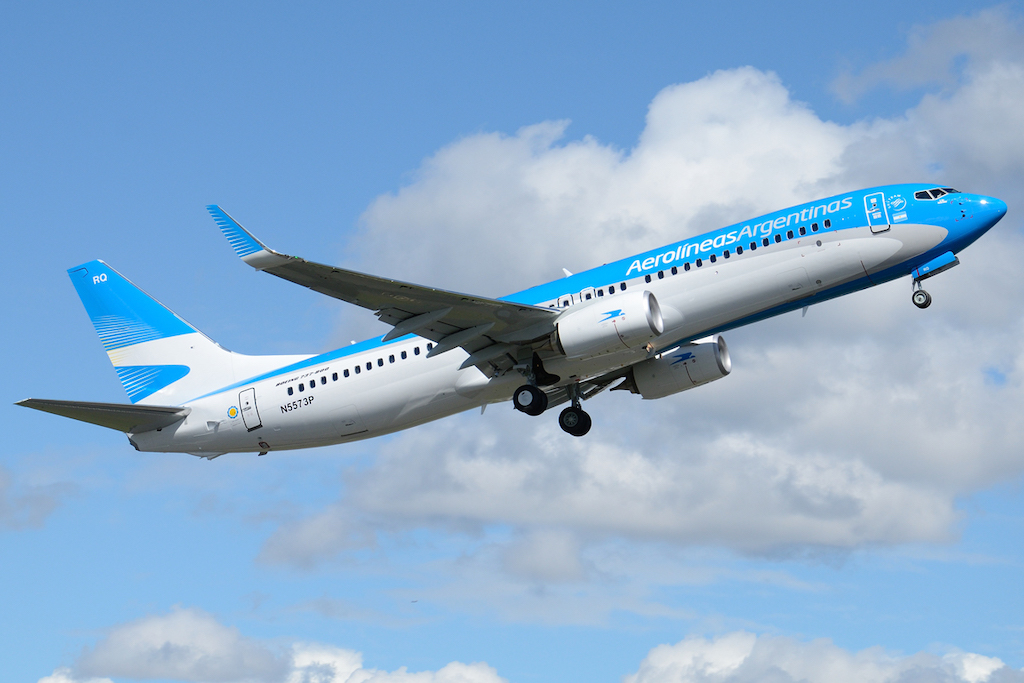Global Airline Group Says Politics, Not Science, Informs South America Border Restrictions

Photo Credit: IATA is urging the government of Argentina to allow airlines to file schedules two months in advance, up from two weeks now. Flickr / Andrew W. Sieber
Governments in Latin America need to "follow the science" and not let politics dictate border reopenings and travel restrictions, or else the region will lag behind the rest of the world in the recovery of both its airline industry and economic growth, Peter Cerda, the International Air Transport Association's (IATA) regional vice president of the Americas, said Thursday.
Despite the rising vaccination rates in the region, many South American countries have maintained restrictive rules both on domestic and international travel. Chile, for example, has vaccinated more than 50 percent of its population and has loosened rules for domestic travel but is still essentially shut for international visitors. Other countries in the region require PCR tests and quarantines for all passengers, regardless of their vaccine status. These are political decisions not based on sound science, Cerda said, imploring countries to relax the regulations for vaccinated travelers. Not doing so could imperil the region's economic recovery, he added.
Part of the problem is that few countries in the region are able to handle digital travel credentials. Self-check in and biometric passport control remain rare in the region. This does not bode well for the adoption of such digital medical credentials, like the IATA Travel Pass.
The inability to process digital travel credentials will prove a constraint as domestic travel recovers, IATA warns. It now takes an average of 1.5 hours to process a passenger through the airport in the region, due to social-distancing and other Covid restrictions. Airports now are processing about 30 percent of the passengers they did before Covid. If traffic rises to 75 percent of pre-Covid levels, it could take as long as 5.5 hours to process a passenger; if traffic matches pre-Covid level, this amount of time rises to 8 hours. But Cerda noted that countries in the region have chronically underinvested in air infrastructure.
Yet, given traffic in the region, there is a way to go before airport dwell times become a major concern. Demand, in aggregate, is down 82 percent from 2019. The split between international and domestic traffic is stark. International traffic is down 88 percent versus 2019, while domestic traffic in the region is down just 32 percent. Border restrictions are one factor explaining the split. The other is that citizens of Brazil — the region's most populous country — are barred from entering most countries due to Brazil's recent Covid surge. Cargo demand is up 4 percent from 2019, but freight ton kilometers have dropped by 21 percent, mainly due to less belly-hold traffic in passenger flights. IATA now forecasts that domestic demand will be about 52 percent of 2019 by the end of this year, rising to 88 percent next year. By 2023, domestic demand will surpass 2019 levels. International demand, however, will not return to 2019 levels until 2024.
A challenge in the region is, as it has been throughout the pandemic, the lack of coordination among governments and the resulting patchwork of restrictions, making it impossible for airlines to plan. Mexico, for example, has remained almost completely restriction-free throughout the pandemic, and as a result its domestic traffic has already begun to exceed 2019 levels. On the other hand, Argentina shut its airspace for months. Now, Argentina's civil aviation regulator is requiring airlines to file their schedules every two weeks and is requiring 2 hours between international arrivals in Buenos Aires. IATA urges the government to allow airlines to file schedules two months in advance, which would give the industry more time to plan routes and frequencies, and to decrease the interval between international flights, Cerda said.
Consolidation could be a lifeline for struggling South American carriers, Cerda said. Governments have ponied up very little state aid for airlines, resulting in the de facto liquidation of several, including Interjet. The region's three largest airlines — Aeromexico, Latam, and Avianca — are operating under Chapter 11 bankruptcy protection in the U.S. Although Latam and Azul walked away from their codeshare partnership on news that Azul is considering acquiring Latam's Brazilian operation, the trend after the pandemic recedes will be toward more consolidation, he said.
Asked about the Federal Aviation Administration's (FAA) downgrade of Mexico's civil aviation regulator, Cerda said the move did not reflect poorly on Mexico's airlines' safety record, but that IATA is working with both governments to resolve the situation. In the near-term, though, it could hamstring Mexico's carriers just as travel demand between the two countries begins to heat up for the summer.
